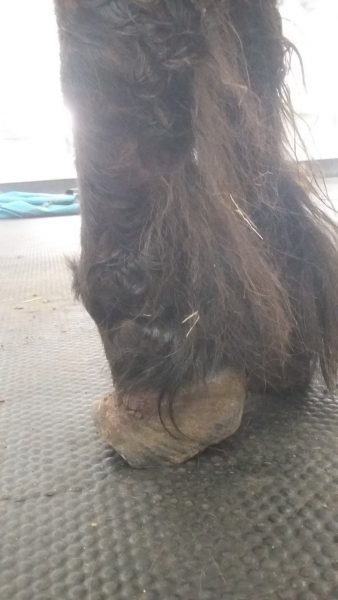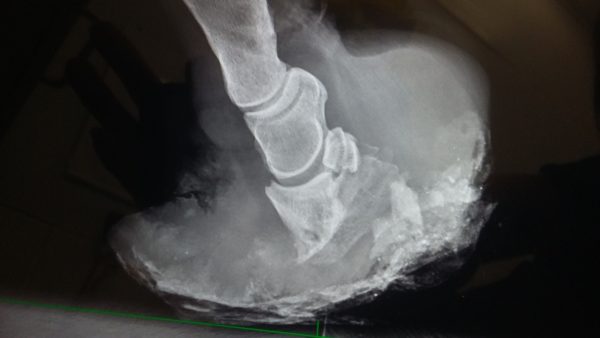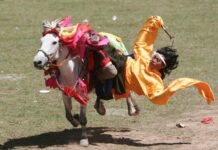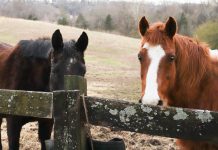Laminitis, a complex, common and potentially devastating disease, remains one of the greatest veterinary challenges in the equestrian world. As knowledge of the pathophysiology, diagnosis and treatment of endocrinopathic laminitis continues to grow, the Equine Veterinary Journal (EVJ) is helping equine vets stay up to speed by giving them free access to a substantial collection of recent articles from around the world.
Understanding and managing equine endocrinopathic laminitis is a special online collection of 27 papers and three accompanying editorials compiled by EVJ Associate Editor Nicola Menzies-Gow and an additional specialist in this field Melody de Laat.
Over the past ten years researchers have made great strides in understanding the pathophysiology of endocrinopathic laminitis. Melody de Laat summarises the collection’s papers on the links between insulin dysregulation, equine metabolic syndrome (EMS), pituitary pars intermedia dysfunction (PPID) and laminitis.
She explains: “We have defined that insulin is the key player in endocrinopathic laminitis. We know that horses and ponies with EMS and PPID are at an increased risk for developing endocrinopathic laminitis and we have come to understand that it’s insulin dysregulation in these animals that’s helping to drive the laminitis.”
There is much discussion about the role of obesity in laminitis. A couple of pathophysiology articles in the collection look at the fact that generalised obesity isn’t necessarily a factor of endocrinopathic laminitis.
What’s actually going on in the foot of an animal with laminitis is still little understood. Several papers focus on lamellar lesions. Others look at the role that growth factor receptors may play in the disease.

“I am really optimistic that within the next ten years we are going to be able to understand the pathophysiology of this condition really well,” said Melody. “And then we’ll be able to turn our attention to new treatment options for the disease, which will help horses to become pain free.”
Nicola Menzies-Gow’s editorial reviews the collection’s papers on the diagnosis of endocrinopathic laminitis. An accurate diagnosis of laminitis relies on owner recognition of the disease. One of the papers seeks to validate this and identified that 45% of cases diagnosed by the vet were not recognised by owners, highlighting the need for better education of owners.
“Detection of insulin dysregulation is essential to identify animals at increased risk of endocrinopathic laminitis so that the preventative management strategies can be focused on these individual animals,” says Nicola.
Several papers focus on variables of oral sugar tests used to detect insulin dysregulation, such as dose of glucose or corn syrup, pre-test starvation and the effects of breed, diet and season. A further study concludes that the optimal test for tissue insulin resistance is the insulin tolerance test, while two other papers relate to assay validation and the most effective tests to use.
While insulin dysregulation is a central feature of endocrinopathic laminitis, another paper evaluates other risk factors before the disease occurs and concludes that high insulin concentrations and low adiponectin were associated with an increased risk of developing the disease in the next one, two and three years.

Nick Bamford, an equine vet with both clinical and research expertise in laminitis, summarises the articles relating to the treatment of endocrinopathic laminitis, either through the immediate applicability of their findings to daily veterinary practice or by highlighting novel approaches that hold promise for future therapeutics.
The importance of dietary modification and exercise in obese horses and ponies is discussed in one article while another looks at the role of farriers as a potential first point of contact for many owners of laminitic animals. “Optimal treatment of laminitis requires collaboration between vets, farriers and owners,” emphasises Nick.
Unmanageable pain is a common reason for euthanasia in horses with chronic laminitis. Two articles in the collection evaluate other potential analgesic options that may help improve pain control. Two further papers look at the best options for applying digital hypothermia, which is the only therapeutic intervention proven to dramatically reduce the severity of sepsis-related laminitis.
There is hope on the horizon for more sophisticated treatment options, as highlighted in a paper that describes a novel therapy approach to deliver therapeutic proteins deep within the equine foot.
“This special collection is important for every equine veterinary practitioner, whether an ambulatory vet or a clinician,” said Celia Marr, editor of the EVJ. “It brings together the most current work not only on the pathophysiology of endocrinopathic laminitis but also the more practical elements of diagnosis and treatment. With fascinating work being conducted on novel treatment therapies there is every hope that we are now working towards overcoming the obstacles presented by this complex and persistent disease.”

The special collection is available free online here .











